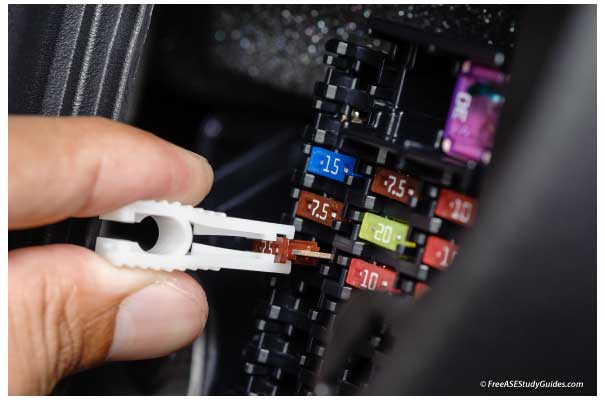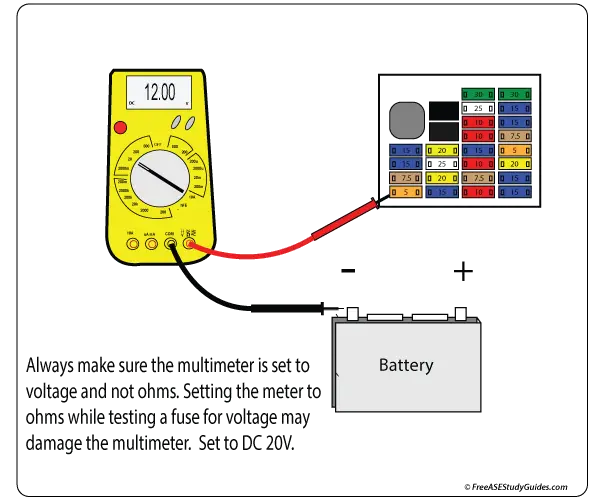Checking for a Blown Fuse

Automotive manufacturers use fuses to protect circuits from excessive current. They contain a metal strip that allows only a certain amount of current before melting open. The thicker the strip, the more amperage can flow through the fuse. If amperage exceeds the amount this element can handle, it melts in two and creates an open circuit. It acts as a weak point in the circuit. The thickness of this metal strip determines the rating of the fuse.
A fuse works when the strip melts and separates. It blows before wiring and sensitive components are damaged. It's important to find the reason for the burned fuse. The fuse most likely blew because of excessive current passing through. If the circuit has repeated fuse failure, check it for a short circuit.

Always use the proper test light or voltage meter to check the vehicle's fuses. Turn the ignition switch to power the fuse box. Clamp the end of the test light or the negative cable of the voltage meter to a good ground close to the fuse box. Check one end of the first fuse. It should light the test light or show around 12.6 volts on the voltage meter. Move the tip to the other end of the same fuse and check that tab. It should light the test light or display the voltage on the meter. If it does not, remove the fuse and visually inspect it.

Spaded clips and looseness cause intermittent circuits in older fuse boxes. After removal, check the fuse for continuity with an ohmmeter. Some circuits may not be powered through the ignition switch. Use the legend on the back of the cover or check in the manufacturer's manual to identify the open circuit.